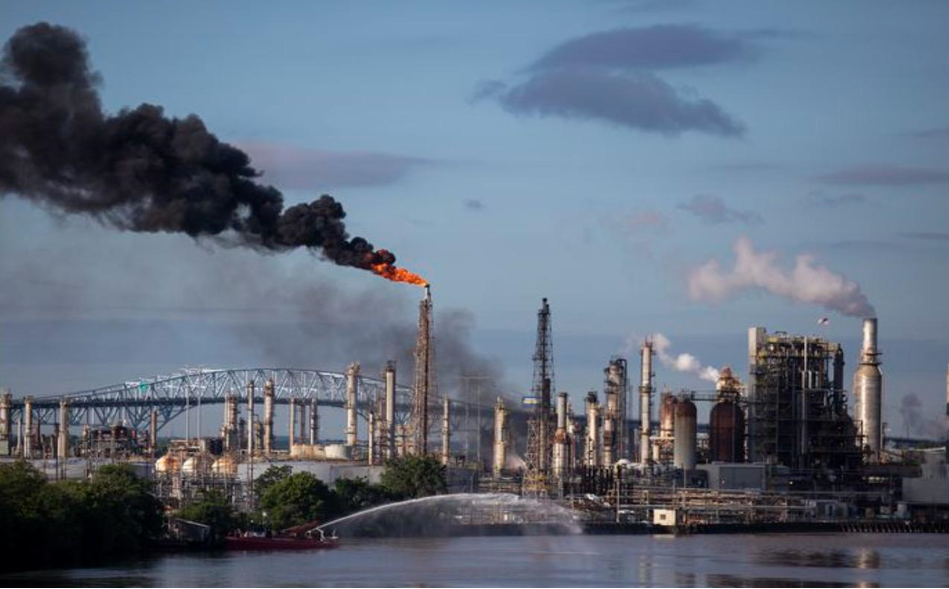
CERCLA and the Exemption of the Oil and Gas Industry
The neglect of the oil and gas industry from a major environmental statute aimed at protecting environmental and public health hinders comprehensive climate action.
In order to protect human health and the environment, federal environmental statutes have been enacted to create a comprehensive governmental response to hazardous materials and wastes. One statute in particular is the Comprehensive Environmental Response, Compensation, and Liability Act (CERCLA).
This statute was created in response to the alarming hazardous waste practices that occurred in the eighties, such as the incident at Love Canal when the Hooker Electrochemical Company dumped over 21,000 tons of hazardous chemicals into the abandoned Love Canal, contaminating soil and groundwater.
Following this catastrophe, Love Canal was designated a Superfund Site through CERCLA because of the area’s poor hazardous waste management. This environmental statute fosters accountability on the part of polluters to clean up potentially hazardous substances; however, environmental and public health liability has not been shared equally among polluters.
The purpose of CERCLA is to “identify sites where hazardous materials threaten the environment and or public health as a result of leakage, spillage, or general mismanagement,” and yet the oil and gas industry in particular remains untouched by this regulation.
The hazardous substances that are covered under the CERCLA statute, such as benzene, toluene, xylene, and ethylbenzene, are elements of petroleum. Therefore, the exemption of the oil and gas industry from this environmental statute not only creates major health risks, but also highlights the industry’s political power to evade regulation under CERCLA—in spite of the industry’s use of such hazardous materials.
When the regulation was passed in 1988, Congress developed the “petroleum exclusion” in an effort to avoid pressure from the oil industry’s strong lobby. In other words, the passage of the statute was contingent upon Congress catering to petroleum company lobbyists who fought for the provision to exclude all crude oil production wastes from CERCLA liability.
In spite of the aggressive lobbying efforts, it is impossible to argue that the industry does not qualify for coverage under CERCLA because of the chemicals found in petroleum and the known environmental and public health hazards oil and gas production pose. For example, methane is a waste product of the oil and gas industry that is leaked at a rate of seven million tons per year and causes serious public health implications in addition to environmental hazards.
Additionally, the Intergovernmental Panel on Climate Change (IPCC) has stated that “more than half of the warming we experience over the next two decades due to current emissions will be from the continued release of methane and other short-lived pollutants into the atmosphere.” From a public health standpoint, people exposed to toxic substances, such as xylene and benzene, can have an increased chance of getting cancer or experiencing other serious health impacts related to immunity and reproductive health. Therefore, chemicals that would typically fall under the jurisdiction of CERCLA are immune to the statute’s public and environmental health regulations when encompassed in petroleum or crude oil.
This lack of regulatory oversight over the oil and gas industry affects communities across the country, and Philadelphia is no exception. The Philadelphia Energy Solutions (PES) refinery “was the largest single emitter of toxic pollutants in Philadelphia…These toxic emissions include benzene and other known carcinogens.”
Additionally, the PES refinery has forced predominantly BIPOC and low-income neighborhoods like Gray’s Ferry to bear the health consequences of the pollution with an alarming amount of residents suffering from asthma and early developments of cancer. Despite this clear example of environmental racism and public health risk, the PES refinery is still not a designated Superfund Site.

This exclusion cannot continue. In order to have an effective clean energy transition during such a pivotal decade for climate action, especially in light of the climate action plan in President Biden’s infrastructure proposal, the remediation of oil and gas industry sites must be mandated under CERCLA.
The infrastructure bill currently includes $16 billion for employing union oil and gas workers to “cap abandoned oil and gas wells and clean up mines.” If the oil and gas industry were included in the CERCLA requirement, this aspect of Biden’s plan would force a proper clean-up of these abandoned oil and gas wells, which would prioritize human and environmental health.
While this may increase the proposal’s budget, it is nonetheless critical to crack down on the oil and gas industry given its repeated pattern of evasion from environmental regulation. Robust climate action will continue to be hindered if the industry maintains its current exemption from CERCLA. The health of the public and the environment can no longer be sacrificed.
This insight is a part of our Undergraduate Seminar Fellows’ Student Blog Series. Read work from other students and learn more about the Undergraduate Climate and Energy Seminar.
Erin Kelly
Undergraduate Seminar FellowErin Kelly is an undergraduate student studying history, French, and sustainability and environmental management in the School of Arts and Sciences. Kelly is also a 2021 Undergraduate Student Fellow.

